“…ask not what your country can do for you; ask what you can do for your country.”
- John F. Kennedy
The reason why I open this possibly naive post with this quote is because I intend this wish list to be a reminder to myself (and all other medical/health professionals) that what the new government can do for us, will largely be modulated by what we can do to contribute. There has been a lot of political discourse on Mr. Narendra Modi’s landslide victory, and I do not intend to go into all of those (for one thing to maintain the political neutrality that has largely been a feature of my public dealings and blog writing), but try to focus on some key issues, which, in my opinion, will lead to the formation of a healthier healthcare system in India. Please do not find political undertones in this post. It is intended to be a pointer on the things one can do to ameliorate some of the issues ailing our healthcare and medical education systems. In no particular order, my “ten things I wish we can take care of” for establishing a better healthcare and medical education system in India, are:
1. Universalization of the National Knowledge Network:
The National Knowledge Network is a brilliant idea, whose time has come to bear fruit. In essence, it is a “state-of-the-art multi-gigabit pan-India network for providing a unified high speed network backbone for all knowledge related institutions in the country. The purpose of such a knowledge network goes to the very core of the country’s quest for building quality institutions with requisite research facilities and creating a pool of highly trained professionals. The NKN will enable scientists, researchers and students from different backgrounds and diverse geographies to work closely for advancing human development in critical and emerging areas.”
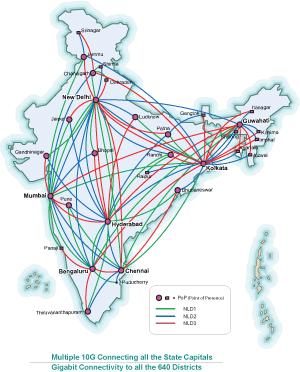
Tying the nation together: Can the NKN do it?
Now you shall definitely wonder what the relevance of high speed internet connection is in a nation where loads of people do not have access to basic, simple amenities like clean, potable water and sanitary toilets; but one has to keep in mind the unique position India is in. On one hand we have massive issues with the basic public health problems like infectious diseases, water-related illnesses, etc. and on the other, we are a rising superpower, fast expanding market, whose economy has borne the brunt of the worst fiscal storms in the past decade. With the nation in such a state of flux, it would be unfair to cast issues in black and white. While we need clean water and food for all, amongst all of the other basic amenities, we also need to remember to grow and expand. And for that, developing the NKN and integrating all teaching/learning institutes under its banner is essential.
In this age, information is a legitimate mode of therapy and the NKN is the first step on the long road to administering it on a nation-wide basis.
2. Streamline Medical Education in India:
One of my pet peeves is medical education and I think that it is a weird situation we have in our country when it comes to medical education. Different medical schools in different states (sometimes different cities within the same state) are administered by different universities which have different expectations from their medical students. They have similar syllabi, but the examination patterns wildly vary; there is no uniformity in teaching processes in course of medical school years; and worst of all, once we are done with out MBBS degrees, we have to start all over again in the run to bag an MD/MS seat. While this may seem fair to some, to me, this shows the beginnings of a detrimental trend. Everyday medical teaching/learning is getting sacrificed at the altar of “is it of any use in the MD/MS entrance exam”? I know the magic words which grab the attention of every sleepy soul sitting in my classes: “Listen up folks, they asked an MCQ on this last year in XYZ Exam!” That is not a great way to learn medicine. Internship has also become a secondary affair because, come to think of it, what is the point of labouring in the surgery wards, when all you need to do is rote-learn 10,000 MCQs and get to Radiodiagnosis (or whatever!).
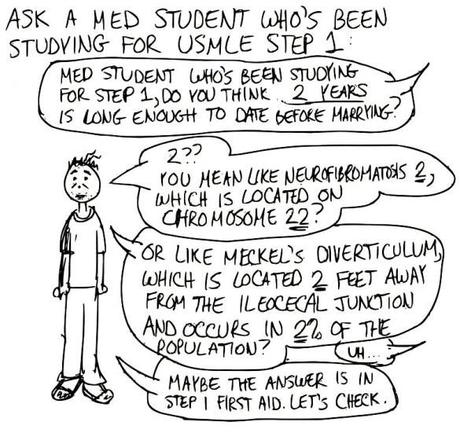
Indian PG Preparations are worse (Credits: Fizzzy at Doccartoon)
A common mid-career exam, not unlike the USMLE Step 1, administered nationally at the end of the pre/para-clinical years and another one at the end of the clinical years with a post-internship practical exam for assessment of clinical skills in an OSCE pattern (like the stuff they make you do in MRCP exams, not the simulated acting stuff in USMLE Clinical Skills) could be a way out. The scores of these exams could be used to ascertain who gets what in the MD/MS set up. Now that we know that the medical education system has the capacity to organise nation-wide, online tests (the NBE has been conducting the All India PG Entrance Exam in this mode for the past couple years now), this should not be such a difficult thing. It would ensure that irrespective of where you come from, all students have to adhere to a certain, nationally-set standard, not just at one point in your life, but all through medical school.
Before you start punching holes in my theory, let me just exhort that this is just an idea. There can be alternatives to this, but the main philosophy is to create a standard that everyone needs to adhere to all over the country. This would also, probably, help in reducing the charges of corruption and money-mongering sometimes levelled against the medical education system.
3. Ensure Availability of Essential Drugs in Every Medical Care Centre:
This is one of the most burning problems not just in India, but the world over. Provision of treatment, and who bears its cost. This is a riddle that the best minds in medicine are struggling to unravel, and a rookie as myself, well, I would not even dare to make any suggestions as to how to solve this. All I can think of is this: every medical care giving institution, and not just the tertiary care centres or secondary care centres, need to be able to provide their patients with some essential medicines free of cost. This would reduce the out of pocket expenditure of the persons concerned. But this is not a sustainable solution, and I propose this only as a scaffolding till a more permanent one is put in place.
4. Universal Medical Insurance and Access to Healthcare Services:
This is the permanent cure to the problem I spoke of above. And until Universal coverage of access and insurance can be done, in order to avoid financial ruin, the system could hold up patients and their families with the generic essential drugs supplied from the care centres. I know there are a lot of methodological and ideological challenges to the establishment of such a system, but in a nation of 1.2+ billion people, no change is easy.
One thing that could have helped was the now-abandoned Aadhaar Card project. If every Indian was given an identity number or something, not unlike the social security number given in the developed countries, it would have been easier for any such universal insurance program to have been launched. I am not saying that the program has to be entirely funded by the government money, it could be modelled in a way like the US Medicare (except, make it less inclined to defensive medicine), or create a pay-per service system. Once again, this is an idea, whose exact details need to be fleshed out, but one which is essential moving forwards into an era where the nation is going to grow older and older and invert the age pyramid.
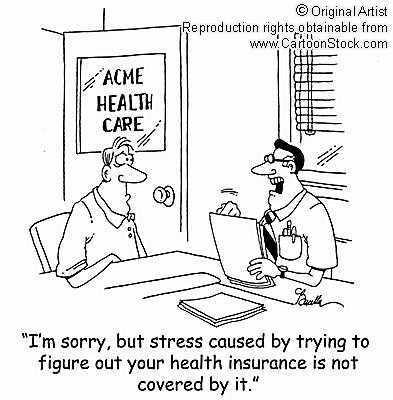
One argument, or apprehension, that has often come up is that insurance might lead to increase in expenses at the national level, due to doctors ordering more and unnecessary tests (or medicines) or patients asking for them, just because the individual patient does not have to pay upfront for it. Whenever someone threw that question at me, I have always acknowledged it is a socio-economic-legal problem that needs a multidisciplinary solution, which I would not be able to pull out of my hat like a magician. But at the same time, I also relate one experience of mine from back in the day, when I was working in a Critical Care Medicine unit.
We had this patient who was doing really badly because of multi-organ failure and sepsis and we were escalating the doses of antibiotics to deal with the issue. Now we had prescribed some particularly powerful, and needless to say, expensive antibiotics, which were not provided by the hospital. We asked the patient’s family to provide us with doses for the next 2-3 days. A family member provided us with a single day’s ration and assured us that he would be back with more the next day. But, the next day, he was nowhere to be found. The patient missed a dose before we pooled in some money from our own pockets and got her the meds for the day. The third day, same thing happens, and we start wondering how long we should do this. Then, later that night, the patient’s family member, who had assured us of more medicines, turns up. Naturally, we were a little pissed off with him and wanted an explanation as to what was going on. He said something which silenced us all: “Sir, it takes more than a day to sell one’s land and house, which I had to do to afford these meds.”
All I have ever believed is that nobody should have to face utter bankruptcy and financial ruin because of an illness or an ailment. Insurance could inflate overall expenses, and we cannot have the evidence whether or not it would be good for the nation in the long run unless we actually pilot it and see the results. But at the same time, it would provide some cushion for patients like these, who wouldn’t have to sell their home and hearth to pay for medicines. I am sure that I am not the only one with such experiences. The veteran practitioners have more heart wrenching tales of horror.
5. Rejuvenate the Referral System:
One of the biggest problem in any government hospital in the big cities is overcrowding. Go to any Outpatient Department, or ER, you are bound to find people spilling over, and the rooms bursting at their seams with crowds. Harried doctors, running around or shouting, trying to get a semblance of order amidst all the chaos. Anyone who has ever been to a government healthcare set up will not disagree with me. One of the major reasons for this overcrowding is the complete break down of the referral system. There is no need for a patient with a simple issue, say, like diarrhoea, to be transported from a village to the city hospital for treatment. A large set of the patients seen every day at these overcrowded clinics is because they either did not attend the primary or secondary healthcare facility or were referred from there to the higher centres for better management.
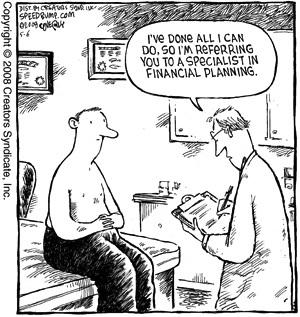
Indian healthcare system is a three-tiered one. If you take out two of those three tiers and still expect the remaining third tier to provide quality care for all, that would be unreasonable. The referral system needs to rejuvenated. And that spawns the uncomfortable question of sending doctors to villages.
6. Strengthen Rural Healthcare System:
One thing the political establishment has always failed to appreciate is that the doctor is only one element of a whole system that needs to be in place to make a healthcare centre work well. I admit this is a really vital element, but a doctor is not the be-all-and-end-all. We are one part of the whole jigsaw puzzle.
Just imagine the plight of a doctor, who is manning a deserted primary healthcare centre: he has no medicines, no or minimal nursing and paramedical staff to support him, minimal investigation and pathology set up (if at all), and of course, no way to deal with an emergency (medical, or otherwise) if one breaks out. In such a contained situation, treating even the simplest of diarrhoea cases can lead to dire doubts. When the danger is to life and limb if something goes wrong, the prudent choice is to pass the buck – refer the patient out to the big hospital in the city for better medicines and care!
Sending doctors is essential, but it should not be the only ploy. It is myopic, short-term, and symptomatic relief to a cancer that hides and grows deep within the system. The need is to emergently infuse new life and infrastructure into these primary and secondary care centres. Developing Public-Private-Partnership models could also be a way. Now one thing that has aroused a lot of hope in me is the fact that Gujarat is one state which has shown the way on how to manage the primary healthcare centres. It is one of the very few states which has NABH accredited PHCs. These PHCs were in a very bad shape even a decade or so ago, and yet, made the cut for accreditation. If that model ca be replicated across the nation, it will indeed bolster the healthcare system.
7. Galvanize the National Rural Health Mission:
The jury is still out on whether the NRHM is a bad idea, a massive flop and a waste of resources, or whether it was an effective step in implementing a nation-wide public healthcare system, which had not only curative and palliative aspects to it (which are the usual facets) but also some stress on the preventive and promotive bits as well. From what little I have read in the newspapers, it seems that Modi personally believes in a preventive model rather than a curative model, and I think this bodes well for the NRHM.
To be honest, I have always been confused about where the NRHM was eventually headed for. I mean that it is a comprehensive health program, but at the same time, leaves out the growing urban population entirely (or at least focus majorly on the rural India). While I agree a majority of India lives in villages, but, it would be a really bad plan to create a health mission that dealt with urban problems in the same breath as rural ones. Digressing for a moment, let me come to the issue of the urbanising pressures in India. Urban India has distinctly different health problems and health needs than rural India. A National Health Mission needs to be in place, but it also needs to take cognisance of the fact that India is in a paradoxical mode now as far as health is concerned. We have pregnant mothers and newborn children dying in the villages due to access issues, while mortality and morbidity from non-communicable diseases and lifestyle diseases are on the rise in the cities! Like our economy, our healthcare system is also plagued with the worries of both the developed and the developing world.
The NRHM needs to be revamped to be able to deal with these differential needs of the people. Its functioning needs to be integrated within the framework of teaching and training at all levels so that it does not have to stand alone anymore as a separate stakeholder, rather, it becomes one with the medical system itself. There has to be a focus on horizontal integration of the different privative programs so that each public health program fluidly works in sync with the others. For example, the Revised National Tuberculosis Control Program should be able to integrate its functioning with the National Program for Non-Communicable Diseases (Diabetes, Cardiovascular diseases and Stroke), so that diabetics (with or without Tuberculosis) can be better provided preventive and curative services.
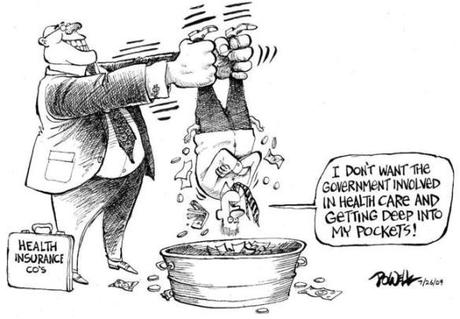
The principle remains the same: prevention is better than cure, and a stitch in time saves nine.
8. Academic Accountability:
Now this is something that no Government can assure unless the people are willing. There should be an academic accountability at all levels. For those medical and paramedical or nursing personnel who are no longer serving in training institutes, there should be regular re-accreditation processes to ensure that their working knowledge is up to scratch. This is something akin to the board certification that US doctors have to hold on to once every five years. While this would put a majority of doctors at an uncomfortable position, it is also true that in an age of evidence based medicine, it would also be one of the best ways to keep oneself acquainted with the newest developments in the field of medical sciences.
9. Enhance the use of Technology to Liaise Between Different Preventive and Public Health Systems:
One of the facets of the Modi campaign was its strong social media and tech presence. As a vocal proponent on the tech front, he has raised hopes of creating open, interactive, transparent, technology-empowers systems to bolster the preventive and public health programs. One of the best examples, once again I lapse into what has become a meme nowadays, is the Gujarat model of eMamta. It is a mobile-technology based mother and child tracking system. One of the biggest public health riddles in the Indian context was the maternal mortality rate. It has stubbornly stuck at higher than expected rates despite intense public health interventions on multiple levels of the healthcare system. This mobile health based system could be a game changer in the way that it increases access and reduces emergency response times for pregnant mothers.
A similar approach needs to be adopted to bolster the use of technology to further the public health programs. One of the endeavours that I am aware of, and which needs a big push, is the National Health Portal. We need to develop more such enterprises, especially in order to integrate the programs that are already in place. One thing that I have always believed is that these individual programs may be massively successful in their own regards, but in the larger picture, it may be a massive flop. Let me give an example.
I shall be reverting to the RNTCP again. This is the largest TB control program globally and caters to millions of people each year, however, the TB wrath is still rampant in India. Despite the RNTCP meeting its target numbers, the public health menace of TB has been only marginally reduced. This can be explained by the fact that additional factors, like malnutrition, tobacco or alcohol abuse, diabetes, HIV infection, untreated women in families, etc. are still causing the problem to slowly fester in our homes. Now the RNTCP, though dealing with tuberculosis, will not bother itself about the other issues (and it is inconceivable in the present system structure either). So, although the RNTCP is a very successful “vertically running” program, it fails to address the multiple issues emanating from the single problem of tuberculosis. However, if there was a program that liaised with different vertical programs to deal with a single patient of TB who might have multiple issues, it would have led to a better outcome in the larger context of the disease control.
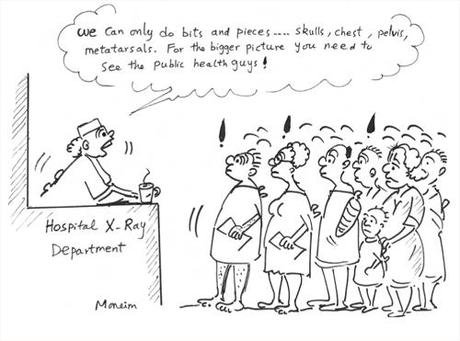
10. Have Measurable, Long Term Goals:
All these elements on the wish list would mean nothing if it does not translate into better health on a national level. For that, there should be specified, long term goals, and in the interests of transparency, interested stakeholders should be able to scrutinise the progress on these counts. While I do realise that understanding which goals to go for and which targets to set is a difficult enough task in itself, it should not be the end of the road. For instance, though the Millennium Development Goals have not all been achieved on time, they did have a palpable impact on the domains related to the goals. There is bound to be some tangible improvement if there is a fixed point one is aiming for. The new government needs to give some thought into developing these goals and then relentlessly pursue them over the next few years (or more!)
…but, in conclusion:
I come back to JFK’s words. We need to put our hands up and start inculcating the change we want the Government to usher in. One thing that I have been thinking is that the majority mandate is a rarity in India. This is the first time since 1984, when Mr. Rajiv Gandhi rode a massive sympathy wave to single handedly form the Government, that a single party has won enough seats to form the Government on its own without having to rely on alliances and other means. This gels well with Mr. Modi’s style of administration. It is sometimes difficult to take the hard calls in an alliance-riddled government where vested interests and rivalries may need to be accounted for before making any decision. This will not be a concern for the current office bearers. They can dedicate themselves to their ideas and chase them with their own convictions. The largest democracy has raised its hand and unanimously asked for a change of style, in ways more than one.
Still, all said and done, “the Government” can only do so much. We, the people, hold the real power. We, the people, are the only ones who can bring the real change. So, whether my wish-list is fulfilled or not, I shall try my best to work my way towards earning these… What is on your wish-list?
